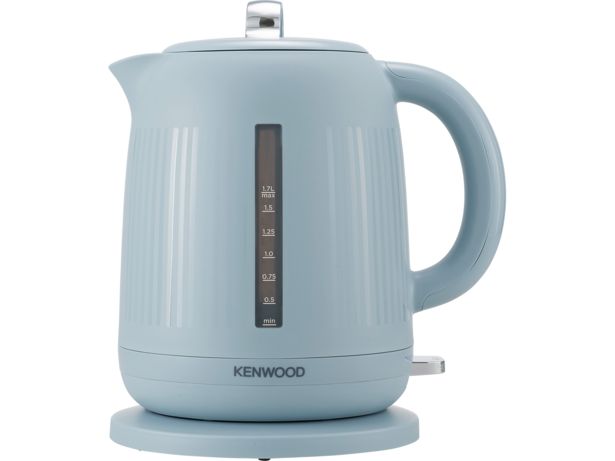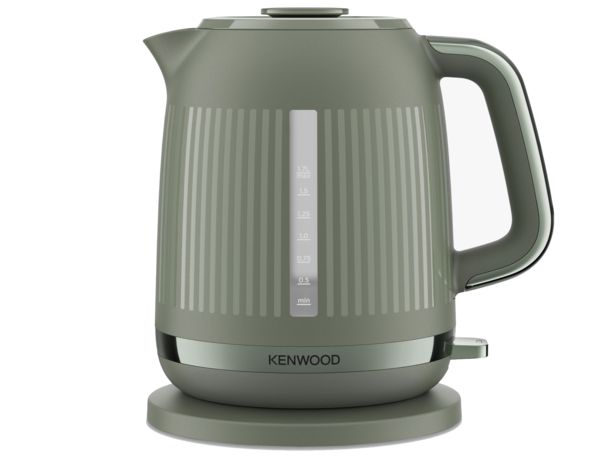By clicking a retailer link you consent to third party cookies that track your onward journey. If you make a purchase, Which? will receive an affiliate commission which supports our mission to be the UK's consumer champion.
Best hot water dispensers

Hot water dispensers give you a cupful of hot water at the push of a button, and are an alternative to using a kettle.
While we don't test these any more, you can still see which models we've recommended from when we last tested, and where to buy them.
Rather have a kettle? See the best kettles from our tests instead.
Best hot water dispensers
This table shows the results from our independent tests of hot water dispensers. We have now stopped testing them, but the models featured are still widely available.
| Hot water dispensers | Our verdict | Speed | Variability in amount dispensed | Score | Where to buy |
|---|---|---|---|---|---|
Breville Hot Cup VKJ142  £40 | Pros: Fast, doesn't spit much when dispensing, simple controls, easy to use Cons: You can't change how much it dispenses, cancel button isn't very responsive, hard to empty the water tank How much water will it dispense? A fixed amount - 250ml Water tank capacity: 1.5 litres | 74% | SQUIRREL_TEXT_50011934 | ||
Breville Hot Cup VKJ367  £70 | Pros: Quick, doesn't drip, Brita water filter included Cons: Water filter makes it heavier to hold when filling at tap, hard to empty the water tank How much water will it dispense? Choose from nine different settings, ranging from 170ml to 325ml Water tank capacity: 1.8 litres | 71% | SQUIRREL_TEXT_50011935 | ||
Breville Hot Cup VKJ318  £65 | Pros: Fast, doesn't spit much when dispensing, simple to operate Cons: Not consistent in how much it dispenses, not suitable for small cups How much water will it dispense? Choose from nine different settings, ranging from 150ml to 300ml Water tank capacity: 2 litres | 64% | SQUIRREL_TEXT_50011936 |
The models rated in the table above were all tested in the Which? test lab in 2012, and have remained on sale since then. The Which? total test score for hot water dispensers ignores price and is based on: 40% overall ease of use, 25% consistency of volume dispensed, 25% speed, 5% water temperature, 5% build quality.
We've tested kettles from 40 brands to help you find the best. See them all in our kettle reviews.
Hot water dispenser pros and cons
Pros
- Can dispense one cup at a time
- Some have a variable setting, so you can alter the amount of water dispensed
- Quick to provide hot water
- Good if you have problems lifting and pouring kettles
Cons
- Not suitable for heating large quantities of water
- Water is hot but not boiling
- Often limited between 150ml and 350ml
Looking for a boiling water tap? Find out how the most popular brands compare in Quooker, InSinkErator, Grohe and other boiling water taps
Best hot water dispenser features

If you find kettles bothersome to lift, fill, carry or pour, or just like the idea of dispensing a speedy cup of hot water without waiting around, a hot water dispenser could be a practical solution.
These are a few of the features you should look out for when choosing the model for you.
Boil dry protection
This is a safety feature that stops the hot water dispenser from working, and turns it off, if the water tank doesn’t contain enough water.
All of the hot water dispensers we tested had this feature.
Drip tray
All of the hot water dispensers we tested come with a drip tray, similar to one you’d find on a coffee machine. This is where your cup sits while it’s being filled, and the drip tray will also catch any spills
Easy-to-fill water tank
All the hot water dispensers we tested have fixed water tanks and need to be filled in the same way that you would with a kettle – either at the tap, or by filling up the tank with a jug.
The water tank can't be removed separately from the dispenser, like on a coffee machine, but the water tank and dispenser can be removed from the base of the appliance (like a kettle).
We’ve tested hot water dispensers by filling them up at the sink, as this is the worst-case scenario, and most of them are quite tricky to manoeuvre under the tap properly. For a much easier experience, we’d recommend filling them up with a jug instead.
Limescale filter
A limescale filter reduces the amount of limescale which finds its way into your hot drink.
Some hot water dispensers are supplied with a filter. While this may help to stop scale build up, it does mean an additional ongoing cost to buy the filters, and sometime they can be tricky and fiddly to change – especially if you have grip or dexterity issues.
Stop/cancel button
This is a handy feature to have in case you change your mind halfway through dispensing, or you realise your mug is going to overflow.
An effective stop or cancel button should work immediately. Most hot water dispensers fill a cup in a matter of seconds, so if it takes a while to stop the hot water flow, this function won’t be effective.
Variable dispense
This allows you to change the amount of water which is dispensed - handy if you want to use several different sizes of mug.
Some hot water dispensers can only dispense a fixed volume of water, so if you choose a model with this feature, then you need to make sure the amount of hot water will be enough to fill up your favourite mug.
Read our guide to discover which kettle brand is the most reliable.
How to descale a hot water dispenser
Hot water dispensers - like kettles and coffee machines - should be descaled regularly to keep them working properly.
How regularly you descale will depend on how often you use them and how hard the water supply is where you live. Many manufacturers recommend descaling around once every three months, but we’d advise referring to the instruction manual for your product, where detailed information will be given.
To read more about where limescale comes from, see how to descale a kettle.
Are hot water dispensers cheaper than kettles?

An average mug holds 250ml of water and to heat this amount of water in a kettle or a hot water dispenser takes the same amount of time - around a minute - and the same amount of electricity.
Hot water dispensers are only cheaper and more efficient if you want to boil a single mug of water, and you have a kettle with a minimum fill volume of more than 250ml. In those cases, the kettle will take longer to boil and will cost you more money.
Want to cut costs when making your cuppa? See the best energy-saving kettles.
Does a hot water dispenser actually boil the water?
A hot water dispenser does actually boil water, but we have found that by the time it's dispensed into the cup it's no longer at boiling point.
Water dispensed into a room-temperature mug from a hot water dispenser is 91°C. We repeated the same scenario with a freshly boiled kettle and the temperature of the water was 96°C once it was poured into the mug.
In a hot water dispenser, pipes connect the heating chamber to the dispensing nozzle. Heat can be lost between boiling and travelling through these pipes, so by the time the water has dispensed it has cooled by a few degrees.



